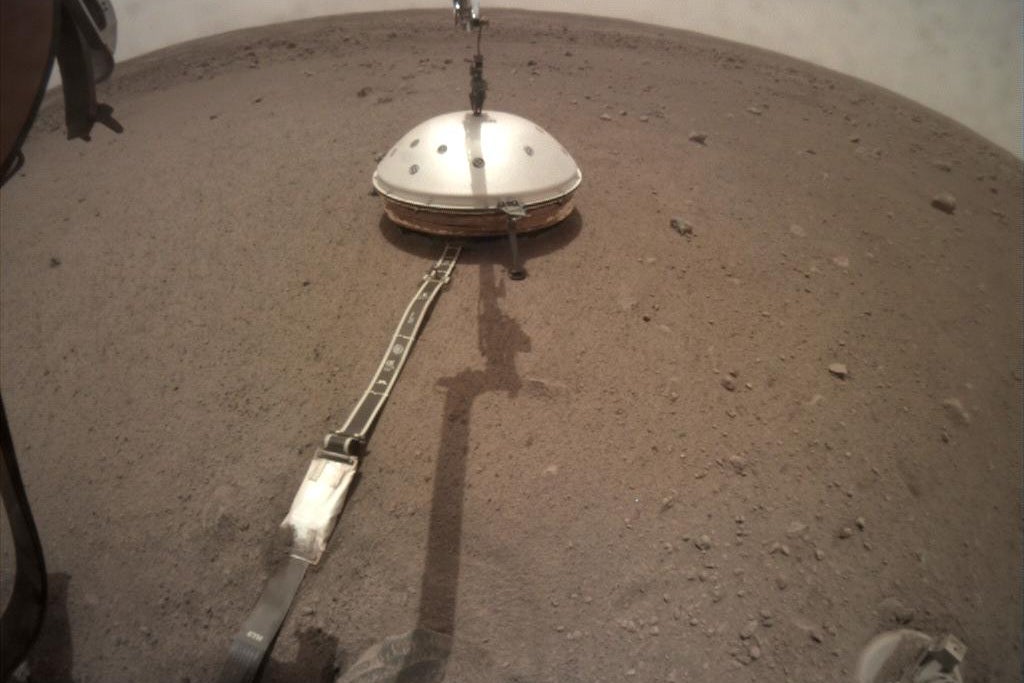Using artificial intelligence, scientists have discovered a crater from a meteoroid that they say shook material as deep as the Red Planet’s mantle: the layer between its crust and its core.
The small lumps of rocks striking Mars can produce seismic events deeper than previously known, the researchers announced Monday.
“We used to think the energy detected from the vast majority of seismic events was stuck traveling within the Martian crust,” Imperial College London’s Constantinos Charalambous said in a statement. “This finding shows a deeper, faster path — call it a seismic highway — through the mantle, allowing quakes to reach more distant regions of the planet.”
Charalambous is a member of NASA’s InSight lander team. He’s also the co-author of related papers published on Monday in the journal Geophysical Research Letters.
The lander, which launched in May 2018, was the first outer space robotic explorer to study the inner space of Mars in depth. It retired in 2022 after a successful and extended mission, setting the first seismometer on Mars and detecting more than 1,300 marsquakes in its tenure.
The studies compared data collected by the lander with impact craters spotted by NASA’s Mars Reconnaissance Orbiter. The spacecraft has orbited Mars since 2006.
A machine learning algorithm was used to sort through tens of thousands of images from the orbiter, and pick certain images for examination by the scientists.
“Done manually, this would be years of work,” said InSight team member Valentin Bickel of the University of Bern in Switzerland.
The team searched for craters within roughly 1,864 miles of InSight’s location, finding 123 fresh craters to cross-reference with data from InSight. Nearly 50 were potential matches.
Looking at seismic waves — caused by the sudden movement of materials within the planet, like during an earthquake, and by space rocks hitting Mars — they’ve found that the data matches the date and location of the craters’ formation.

However, this marks the first time a fresh impact has been correlated with shaking detected in the quake-prone region of Cerberus Fossae: a group of fissures located in the Elysium Planitia plain just north of the equator.
The crater is more than 70-feet in diameter and more than a thousand miles from InSight. That’s much farther from the lander than they had expected, based on the quake’s seismic data.
Because the Martian crust has properties believed to dampen these kinds of seismic waves, the researchers concluded that the waves this impact produced traveled directly through the Martian mantle.
Still, the team will have to reassess their models of Mars’ interior to explain how these seismic impacts can reach that deep.
“We thought Cerberus Fossae produced lots of high-frequency seismic signals associated with internally generated quakes, but this suggests some of the activity does not originate there and could actually be from impacts instead,” Charalambous said.







